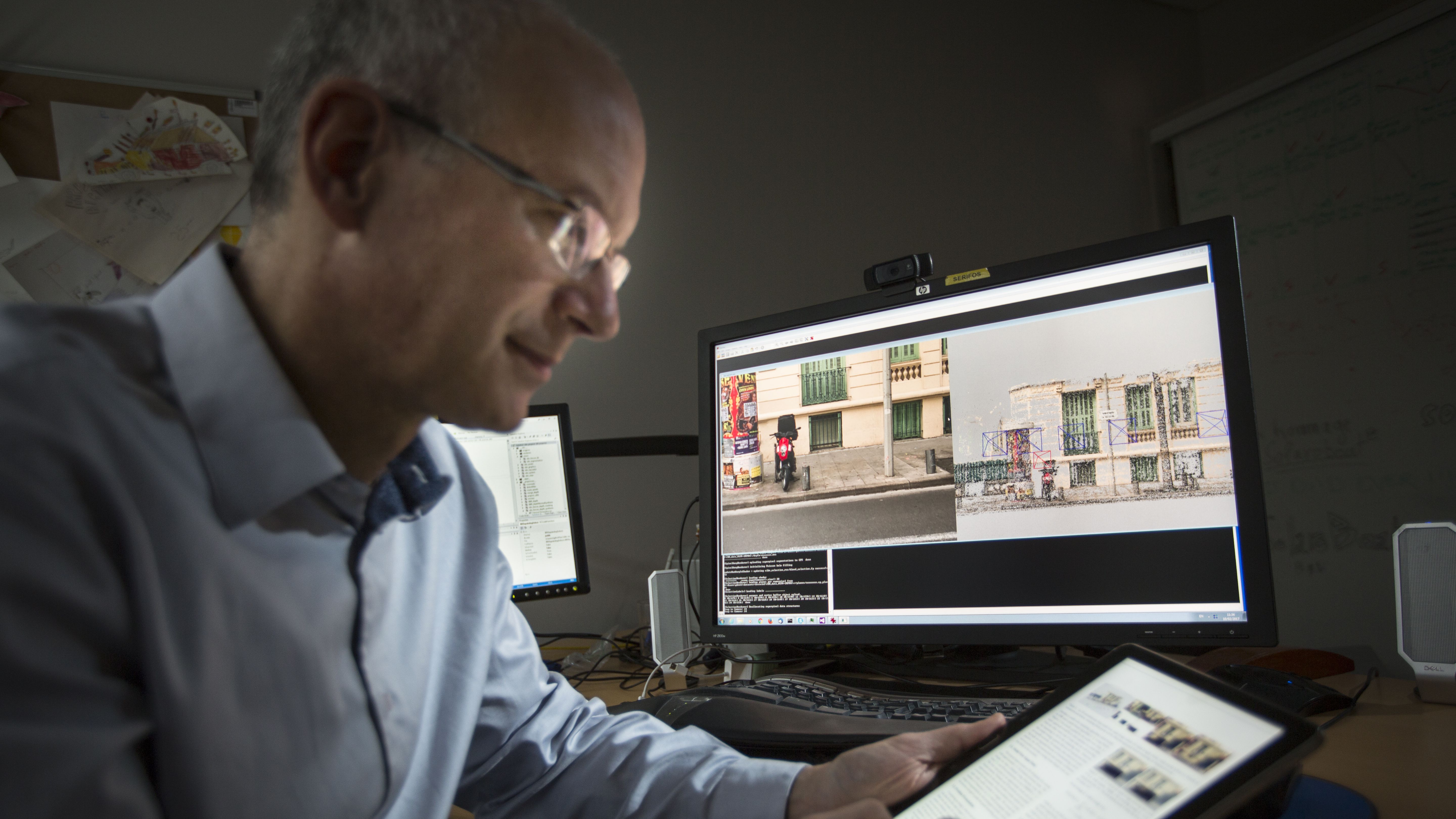Meeting with ERC 2017 laureate George Drettakis
Date:
Changed on 26/03/2020

I studied Computer Science at the University of Crete in Greece, and then obtained an M.Sc. and a Ph.D. in Computer Science at the University of Toronto, Canada, under the supervision of E. Fiume. Then I received an ERCIM postdoctoral fellowship first at Inria Rhône Alpes in Grenoble, then at the Polytechnic University of Catalonia (Barcelona) and finally at the National Computer Research Centre (GMD) in Bonn, Germany.
I work in Computer Graphics , which is the technology used to create images for special effects in films, realistic video games, but also for the simulation of architectural and urban planning projects and product design, and the many recent applications of virtual reality (VR) and augmented reality. The field has seen rapid growth recently, with new applications constantly appearing.
My research focuses on Rendering in Computer Graphics, which involves - in the simplest case - taking a 3D model as input, describing the materials of objects and lights in a scene and generating an image as output, in most cases with a high level of realism.
Creating this content is still a largely manual process: for a film or video game, hundreds of people work on creating the geometry, materials and lights by hand, and adjust parameters to get high quality renderings using expensive numerical computation. This difficulty in creating content and generating realistic images is a huge obstacle to the widespread use of 3D Computer Graphics.
Because of their multiple applications, Computer Graphics need content to generate virtual worlds or virtual representations of the real world. This need is growing exponentially with recent technological evolutions (e.g. virtual reality) and new applications.
Creating this content is still a largely manual process: for a film or video game, hundreds of people work on creating the geometry, materials and lights by hand, and adjust parameters to get high quality renderings using expensive numerical computation. This difficulty in creating content and generating realistic images is a huge obstacle to the widespread use of 3D Computer Graphics.
At the same time, in recent years many real-world capture technologies have emerged: depth sensors (such as the "Kinect" or in smartphones), or computer vision techniques (multi-view stereo etc.). These solutions produce 3D data that is heterogeneous, incomplete and above all uncertain. Therefore these data are not suitable for most existing rendering algorithms in Computer Graphics. The goal of FUNGRAPH ("FUN" for fundamental) is to revisit the fundamentals of rendering algorithms to be able to process this uncertain data in a unified way along with data created by traditional methods. This will require the development of new theoretical and algorithmic tools to treat uncertainty in a principled manner.
I have thought about these issues based on my research throughout my career. My dream has always been that creating and using immersive 3D environments be as easy as taking a picture or a video today. Thus tackling the problem of rendering algorithms for uncertain and heterogeneous data will be a big step towards this goal. A large part of the ideas in this proposal also comes from my work with our research group GRAPHDECO, especially with my colleague Adrien Bousseau, my Ph.D. students and postdoctoral fellows.
ERC funding provides the best possible working conditions to work on exciting research topics. This funding will allow us to take the time to think deeply about the foundations of the problems we want to address, and for which we hope to find the best possible solutions.
The funding will make it possible to set up a research team, with a young researcher over 5 years, post-doctoral fellows, doctoral students and engineers. It gives the ability to establish a sustainable "critical mass" that is simply impossible with the other available funding instruments. This is an incredible opportunity for a researcher.
For now FUNGRAPH topics will keep me busy for a large majority of my time. The work we are going to do, however, could open up several interesting avenues of research, which may go beyond my specific field of computer graphics.
An on-site Augmented Reality user is redecorating a room in collaboration with a remote virtual reality (VR) user.

Such rapidly emerging applications need algorithms that produce highly realistic interactive Computer Graphics renderings at unprecedented scales and scope. Addressing these demands requires us to rethink the foundations of our field, to overcome fundamental limitations in Computer Graphics. Capture methods e.g., from depth sensors can provide a model (b), but it is uncertain, i.e., inaccurate and incomplete. This can be rendered in a remote VR headset using Image-Based Rendering (IBR) (c) but there is no flexibility to modify the scene, such as adding objects or changing lighting. Such flexibility requires manually-designed content which is extremely time-consuming and expensive to create (d-e). High-quality accurate rendering (d) uses expensive simulation to compute global illumination effects; While many fast, GPU-based approximate (e) rendering algorithms have been developed, they have no guarantee on accuracy and often miss important visual effects, e.g., light paths reflecting off the mirror and refracting through glass. To address these problems FUNGRAPH will revisit the foundations of Computer Graphics, so that the advantages of these disparate methods can be used together in new unified algorithms. Our solution is to introduce the treatment of uncertainty as the missing ingredient to achieving this goal.